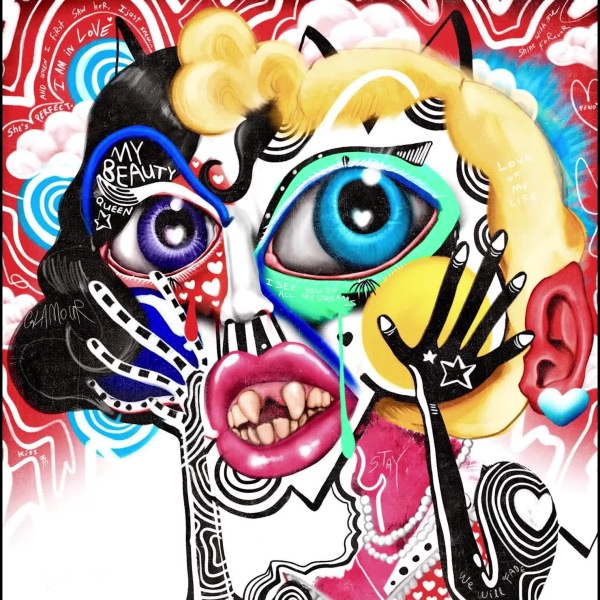
Investing in art is not a "get rich quick" investment. You need to do a lot research before you can find art that's worth selling or buying. Although the market for art can be lucrative, you should avoid impulsive decisions and look for works that have a long-term value. You should also research the lives of living artists and their educational history. Also, it is important to compare the prices of artwork available in order to decide if they are worth buying.
Although art buying is a good investment for the long term, it's best not to rush. You may have to wait for an attractive offer before you can buy it. Similar to selling it, you need to set a solid price and wait for the sale. Be patient and you may be able make a sale. Art investments do not depend on interest rates and government regulations.

Buying art is a great way to diversify your portfolio. You can choose pieces from various categories and keep an eye on their progress. You can spread your investment among several mediums, so you can minimize the risk of overspending. You can also narrow down the prospects to find the ones that are most promising. You'll be able choose the best artworks and get the most out of your money.
One of the benefits of art investments is their long term horizon. Even if there isn't any immediate profit, you will be able to accumulate the wealth over time. While you won't have the luxury of buying a new piece every quarter of artwork, your money will be protected. For those who have long-term goals for investment, art's price is generally stable.
Wall Street Journal conducted a recent study and found that the art market fared better than any other market in 2018. However, it was not the best for stocks. Despite the difficult year for most markets, the art market grew 10.6% on average, while the S&P 500 declined only 5.1%. This is especially good news if you're looking for a safe investment. You can also get great value from art if you follow the rules of the WSJ.

The fact that art offers higher returns than other investments is another advantage to investing in it. Masterworks found that the average annual art appreciation was 13.6% in 1995, as compared to a 10% return for the S&P 500. Each piece is different so the strategy might not be right for you. Bottom line: art investing is risky.
FAQ
Where can I get my first bitcoin?
Coinbase makes it easy to buy bitcoin. Coinbase makes secure purchases of bitcoin possible with either a credit or debit card. To get started, visit www.coinbase.com/join/. Once you have signed up, you will receive an e-mail with the instructions.
Ethereum: Can Anyone Use It?
Anyone can use Ethereum, but only people who have special permission can create smart contracts. Smart contracts are computer programs designed to execute automatically under certain conditions. They allow two parties, to negotiate terms, to do so without the involvement of a third person.
How much does mining Bitcoin cost?
Mining Bitcoin takes a lot of computing power. Mining one Bitcoin can cost over $3 million at current prices. You can mine Bitcoin if you are willing to spend this amount of money, even if it isn't going make you rich.
Where can I get more information about Bitcoin
There are plenty of resources available on Bitcoin.
Bitcoin is it possible to become mainstream?
It is already mainstream. More than half the Americans own cryptocurrency.
Statistics
- Something that drops by 50% is not suitable for anything but speculation.” (forbes.com)
- While the original crypto is down by 35% year to date, Bitcoin has seen an appreciation of more than 1,000% over the past five years. (forbes.com)
- “It could be 1% to 5%, it could be 10%,” he says. (forbes.com)
- This is on top of any fees that your crypto exchange or brokerage may charge; these can run up to 5% themselves, meaning you might lose 10% of your crypto purchase to fees. (forbes.com)
- That's growth of more than 4,500%. (forbes.com)
External Links
How To
How to get started with investing in Cryptocurrencies
Crypto currencies are digital assets which use cryptography (specifically encryption) to regulate their creation and transactions. This provides anonymity and security. The first crypto currency was Bitcoin, which was invented by Satoshi Nakamoto in 2008. Many new cryptocurrencies have been introduced to the market since then.
Bitcoin, ripple, monero, etherium and litecoin are the most popular crypto currencies. The success of a cryptocurrency depends on many factors, including its adoption rate and market capitalization, liquidity as well as transaction fees, speed, volatility, ease-of-mining, governance, and transparency.
There are many ways you can invest in cryptocurrencies. One way is through exchanges like Coinbase, Kraken, Bittrex, etc., where you buy them directly from fiat money. You can also mine coins your self, individually or with others. You can also purchase tokens using ICOs.
Coinbase is an online cryptocurrency marketplace. It allows users the ability to sell, buy, and store cryptocurrencies including Bitcoin, Ethereum, Ripple. Stellar Lumens. Dash. Monero. You can fund your account with bank transfers, credit cards, and debit cards.
Kraken is another popular platform that allows you to buy and sell cryptocurrencies. It supports trading against USD. EUR. GBP. CAD. JPY. AUD. Trades can be made against USD, EUR, GBP or CAD. This is because traders want to avoid currency fluctuations.
Bittrex, another popular exchange platform. It supports more than 200 cryptocurrencies and offers API access for all users.
Binance is a relatively newer exchange platform that launched in 2017. It claims it is the world's fastest growing platform. Currently, it has over $1 billion worth of traded volume per day.
Etherium runs smart contracts on a decentralized blockchain network. It uses a proof-of work consensus mechanism to validate blocks, and to run applications.
In conclusion, cryptocurrencies do not have a central regulator. They are peer-to–peer networks that use decentralized consensus methods to generate and verify transactions.